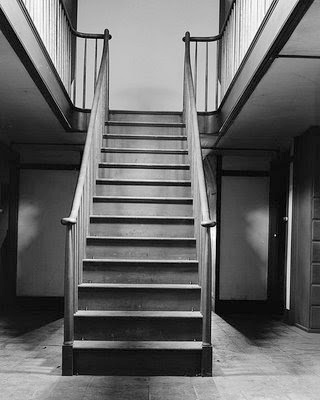Let me tell you about the place where I like to go to write. It is a room on the third floor of a large brick dwelling house in the center of Hancock Shaker Village in western Massachusetts. The village, a trim assembly of yellow, red, and white frame buildings, is rooted in New England, by the grace of a mile or two. From the windows on my right I can see the New York hills that begin the world west of the Yankee realm.
The building is vast, with more than fifty rooms, ninety-five windows, and six stories from cellar to upper attic, but this room is small. Seven steps take me from window to door, five from wall to wall. In the manner of things Shaker, it is simple and functional: plain pine floor, white plaster walls. A pegboard circles the room over my head. Next to the door are a closet and a tall built-in cupboard and case of drawers, butternut and pine stained yellow and orange. The twenty-four-light window is very large in this small space.
At first, all appears perfectly plain. But look more closely. There is care in the proportions. The drawers decrease slightly, pleasingly, in height as they rise. The wall pegs are handsomely turned, when mere sticks would have satisfied utility. Each peg, threaded at the base, twists easily into or out of the pegboard—much extra work for the carpenter, but an admirable bit of foresight, since a tall cupboard would fit flush against the wall with some of the pegs removed. Like an ellipse, or a chambered nautilus, or three lines of haiku, the room possesses a simplicity that is not lightly achieved.
The room is a fine equation: the sum of wood and plaster, plus light, which endlessly alters the look of this place. Mornings here are dim and blue. Shadows curl like cats in the corners. I want to move softly then, as if the room was still asleep. By noon, if the day is fair, the walls have brightened, become crisp and white as starched linen.
As the earth turns toward late afternoon, something special takes place. The room fills with light until it can hold no more, and in this fullness is transfigured. For this moment and a short while longer, there seems to be more than wood and plaster, line and plane. There is harmony, radiance, and a bittersweet glimpse of something like grace. It happens this way every day as the room turns toward the light. It has happened this way for some fifty thousand days since this room was new in 1831.
I like to think of others who have known this moment in this place, especially the Shaker Sister who first lived here. This was the bedroom, or retiring room, which she shared with one or more other women. Her name, her age, her reasons for being here—these are things I will never know. Still, I feel a kinship with her in the way this room has held us both.
This is an excerpt from Introduction to Inner Light: The Shaker Legacy (1984). At the time, June Sprigg was Curator of Hancock Shaker Museum.
